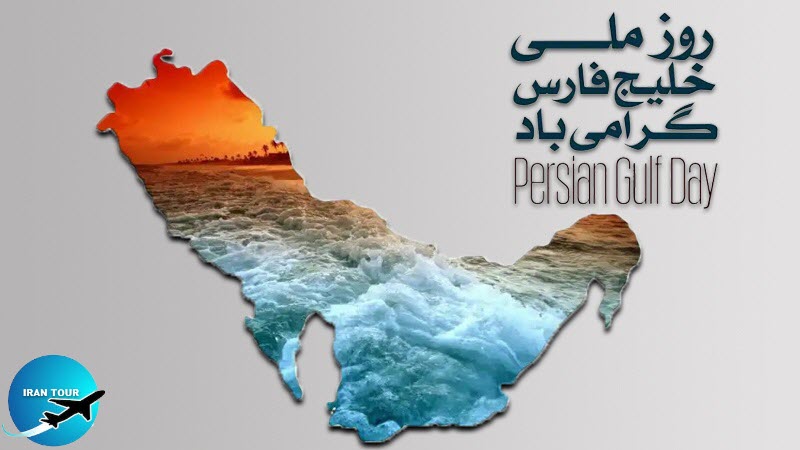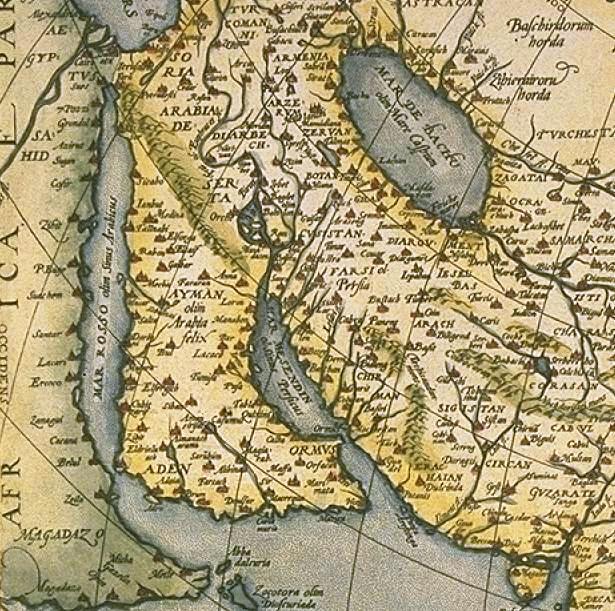Copyright 2020 - 2021 irantour.tours all right reserved
Designed by Behsazanhost
The forever Persian Gulf
The forever Persian Gulf
The Persian Gulf is the most important port between Asia, the Middle East, and the Arabic countries, which opens the sea to the western countries. It has many islands surrounding it and is a great provider of sea life, oil, and gas. It is renowned for its beautiful coral hills. For a time it was usurped by the Portuguese but the local people turned up against this action and took it back. In the time of ancient Persia, the gulf used to be used as part of the ‘silk road’ which was the major trading center between the East and West. Hormoz channel at the border of the Persian Gulf used to be a pay toll port for foreign ships. You have most probably witnessed different wars that took place around this region, including the Iran-Iraq war in 1980 and the Persian Gulf war in 1991. It is interesting to see that the gulf was used as the major battleground for many different wars. In the Iran-Iraq war, it was used as a location to attack Iran from the south. In the Kuwait and Iraq war, the Americans attacked the desert strike.
 |
A vast majority of the Persian Gulf belongs to Iran and some to the Arabian countries. It consists of two parts the Amman sea and the Persian Gulf. The Persian Gulf is a crescent-shaped groove. It is located in the southwest of the Asian region and is an extension of the Indian Ocean. The Persian Gulf ‘Khalijeh Fars’ is an extension of the Gulf of Oman between the Arab Peninsula and Iran. This inland sea of some 233,000 km2 is connected to the Gulf of Oman in the east by the Strait of Hormuz, and its western end is marked by the major river delta of Arvand - Rud, which carries the waters of the Euphrates and Tigris. It has an area of about 241,000 square kilometers. Its length is 989 kilometers separating mainly Iran from Saudi Arabia with the shortest divide of about 56 kilometers in the Strait of Hormuz.
The Persian name for this body of water was borrowed by almost all the old languages, including the Greeks as “The Persian Gulf” and has been in use everywhere since ancient times. It indicates the first major nation-state in that area, namely the Persian Empire, now referred to as ‘Iran’. It could be said that during the 1960s with the rise of Arabic nationalism, Arab countries began to call the Persian Gulf, the ‘Arabian Gulf’. There is also evidence to show that the United Nations, led by the Iranian government officially recognizes that body of water as the Persian Gulf. The first announcement was made through the document “UNAD, 311/Qen on March 5th, 1971” and the second was on “August 10, 1984, named UNLA 45.8.2 (C). The Persian Gulf region is home to some of the world’s most exotic cities. With rapid development brought about by oil wealth, many cities have grown into major economic hubs. The islands and cities on the verge of the Persian Gulf include Badar Abbas, Bushehr, Kish, Umm Qasr, Kuwait City, Manama, Doha, Dubai, and Abu Dhabi. The Persian Gulf is a waterway that stretches far back into history, it was from its shores that the mighty Persian Empire, the world's first and greatest civilization, rose to conquer what was then, the known world. By its shores, the ships of the ancient world traded and paid homage to the mighty empire for whom this Gulf was named. When the armies of the Macedonian Kind Alexander rampaged through the orient, he stopped at the Persian Gulf and believed it to be the end of the world. He thought that the River Oceanus circled the world from there, to the Caspian and then onto the Mediterranean. This great Gulf was witness to thousands of years of civilization, war, success, and tragedy, the Persian Gulf entered the modern era becoming the world’s largest source of fossil fuels and thus enshrining its importance as the world’s most strategic waterway.
 |
| Map by Abraham Ortelius, dated 1580 using the term "Persicus" |
History
«The Persian Gulf was an important transportation route in antiquity but declined with the fall of Mesopotamia. In recent years, revisionism from certain groups has made attempts to try to change the name and history of this ancient gulf. This waterway is a unique geographical phenomenon whose journey began in remote antiquity and has continued to our own day. Its role traditionally occupies an avenue of culture and trade. Today, its role is rather significant as the site of a resource vital not only for the inhabitants of the countries along its shores but for much of the modem world. The Persian Gulf’s unique geo-strategic position further enhances its present importance. The earliest recorded civilizations appeared near its shores some five millennia ago, when the kingdoms of Elam and Sumer blossomed at the head of the Persian Gulf in what is today southwestern Iran near the estuaries of the rivers Tigris and Euphrates. There is evidence to suggest that they and their successors, the Assyrians and Babylonians, had relations with maritime principalities along the southern coast of the Persian Gulf and that trade in precious commodities grew. By the time the Roman Empire became the great consumer of Oriental luxuries such as spices, gems, and pearls, the Sinus Persicus functioned as one of the principal routes by which this commerce moved. The spices and gems came from India and the Orient further east; the pearls chiefly from the Persian Gulf. Indeed, pearls were the famous luxury item exported from there ever since antiquity until, by a curious coincidence, they were replaced by oil in the first half of the 20th century. Even before this flow of Roman species exchanged for Oriental luxuries began, a political transformation had occurred in the entire area. The last great Mesopotamian kingdom of Babylon had been conquered by the Persians, whose earliest historical kingdom, that of the Achaemenids, spread its rule over much of the Middle East. They and their successors, the Seleucids, Parthians, and Sassanians, created an empire that intermittently controlled the Persian Gulf. They sent expeditions and acquired coastal regions also on the Arab side, a process that in turn stimulated mutual interest and movement of populations and occasional settlement and dominance of some Persian segments by Arabs. This Arabo-Persian maritime community asserted itself to an almost legendary degree after the foundation of the Islamic Abbasid caliphate at Baghdad in the middle of the 8th century. Masters of a huge empire, the caliphs and their prosperous elites became consumers of Oriental luxuries. Their own subjects, Persian and Arab, were the merchants and mariners who now brought an ever-growing range of commodities not only from India but even from China.
Then as now, the romantic story of this maritime trade fired the curiosity and imagination of the public, and the adventures of Sindbad the Sailor became an indelible part of the Thousand and One Nights cycle. The texts of this tale, also known as “Arabian Nights,” are in Arabic, but of a kind that reveals the Arabo-Persian community from which they had sprung. Sindbad is a Persian name, as are many basic terms adopted by Arabic: Na Khuda for the captain, Rahnama for sailing directions for example. Moreover, ongoing archaeological research suggests that the port of Siraf on the Persian coast was in the 9th and 10th centuries among the principal terminal of this seagoing traffic, which included luxury ceramics from China. The decline and fall of the Abbasid caliphate reduced the prosperity and importance of this core of the Islamic Middle East and there followed a drop in the volume of long-distance trade with the Orient. A revival, however, came with the rise of Europe as an avid consumer of Oriental luxuries, especially spices. Until the end of the Middle Ages, the shippers and traders were the same Arabs and Persians, but a fierce contest for this lucrative traffic opened with the irruption of the Portuguese into the Indian Ocean and the Persian Gulf at the turn of the 16th century. The Portuguese seized, among other places, several ports in the Persian Gulf, of which Hurmuz was the most important.
On the Muslim side, the Ottoman Empire made its entry into the arena with the conquest of Iraq and attempts to challenge the Portuguese in the Persian Gulf. Significantly, the Turks failed where the English and Persians succeeded a century later. By then in 1622 the East India Company had sown the seeds of the British empire of India, and in subsequent centuries the Persian Gulf functioned as one of the two arteries of Britain’s trade with its major colony (the other was the all-maritime route around Africa). Great Britain found it necessary to control the Persian Gulf for this reason, and she successfully strove to establish her dominant position during the 18th and 19th centuries. In the first decade of the 20th century, Britain added a new dimension to her efforts: search for oil. This in turn brings us to the last and most dramatic stage in the history of the Persian Gulf. A simple enumeration of the countries sharing the Persian Gulf>s coasts and waters offers an evocative panorama of contemporary history: Iran, with the longest shoreline and some of the busiest ports along the northeastern coast; Iraq at the head of the Persian Gulf, then Kuwait, Saudi Arabia, Bahrain, Qatar, the United Arab Emirates, and Oman.
All these countries, in varying degrees, are blessed with vast oil reserves lying along the coasts both under the ground on land and below the sea bottom. It is this vital resource that has propelled the Persian Gulf into the limelight of world events, and the story of its discovery, development, and struggle over its exploitation makes for fascinating reading. It began almost a century ago when in 1908 British prospectors struck oil at the Persian site of Suleymaniye. For nearly two generations, until the early 1950s, the province of Khuzistan was the center of production, processing, and exporting oil, and the Anglo-Iranian Oil Company had the lion’s share of this lucrative business. Geologists rightly suspected, however, that oil deposits might exist in many other parts of the Persian Gulf area. During the 1930s, a number of finds were made on the Arab side from Iraq all the way to Oman. This time mainly American companies seized the initiative, but until World War II production remained relatively modest. The war and the quickened pace of consumption in the industrial world, especially in the United States led to further development of these sources, but the main stimulus for the sudden and vertiginous development of oil wells on the Arab side of the Persian Gulf came from the drama of Iran’s attempt to acquire a fairer share of its wealth. Great Britain and the United States thwarted Dr. Mossadegh’s heroic struggle, and in the process, the production and export of oil from Iran were temporarily halted. That in turn created a windfall for the companies exploiting the oil fields on the Arab side, and their prospectors discovered still more deposits whose yield has led to today’s fabulous wealth of Saudi Arabia and the other principalities along the Persian Gulf.»
- Details
- Category: Where to go in IRAN